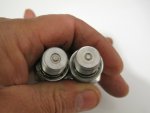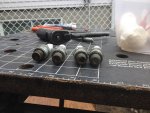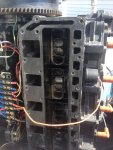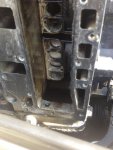Re: force 125 hesitation
The "wet test" is unsatisfactory. You need to let the air-fuel mixture to blow out of the hole and catch it with the napkin so as to see if there is always fresh air-fuel mixture going into the cylinder. If you plug the napkin into the hole the air-fuel mix will not blow out of the plug hole thus you will not see any wetting. Even better is to hold the carb throttle bar link wide open so you can see more fuel. This is the theory behind this test.
First unlike in 4-cycle engine where air-fuel mix directly enters the cylinders, 2 cycle engine pre-staged it first in the crankshaft area. On the piston's downstroke, the mix is compressed with the help of the reeds which acts like a check valve. As soon as the piston crown clears the intake ports, the compressed mix rushes into the cylinder. The fresh mix pushes the exhaust from the previous combustion while at the same time providing fresh mix for the next cycle.
However, if the reed valve is malfunctioning, on the piston's downstroke most of the fresh mix that entered the crankcase will be pushed out again to the carb. And when the piston clears the intake ports, very little of the fresh mix will enter the cylinder to clear the exhaust, hence no combustion takes place especially in idle or low speed where little fuel gets into the mixture (air-fuel). In the "wet test" you are trying to identify if there is always a a good amount of fresh mix introduced into the cylinder. If there is, then there should be wetting in the napkin held in front of the hole. Again, it is a must the plug hole is open and basically just catching the mix as it escapes the plug hole with the napkin.
The looks on #4 spark plug as you mentioned is too clean to indicate combustion is taking place in that cylinder, especially after one hour of running.
Here's a thread that took a lot of diagnosing and eventually concluded with a broken reed.
Good Spark No Fire




















